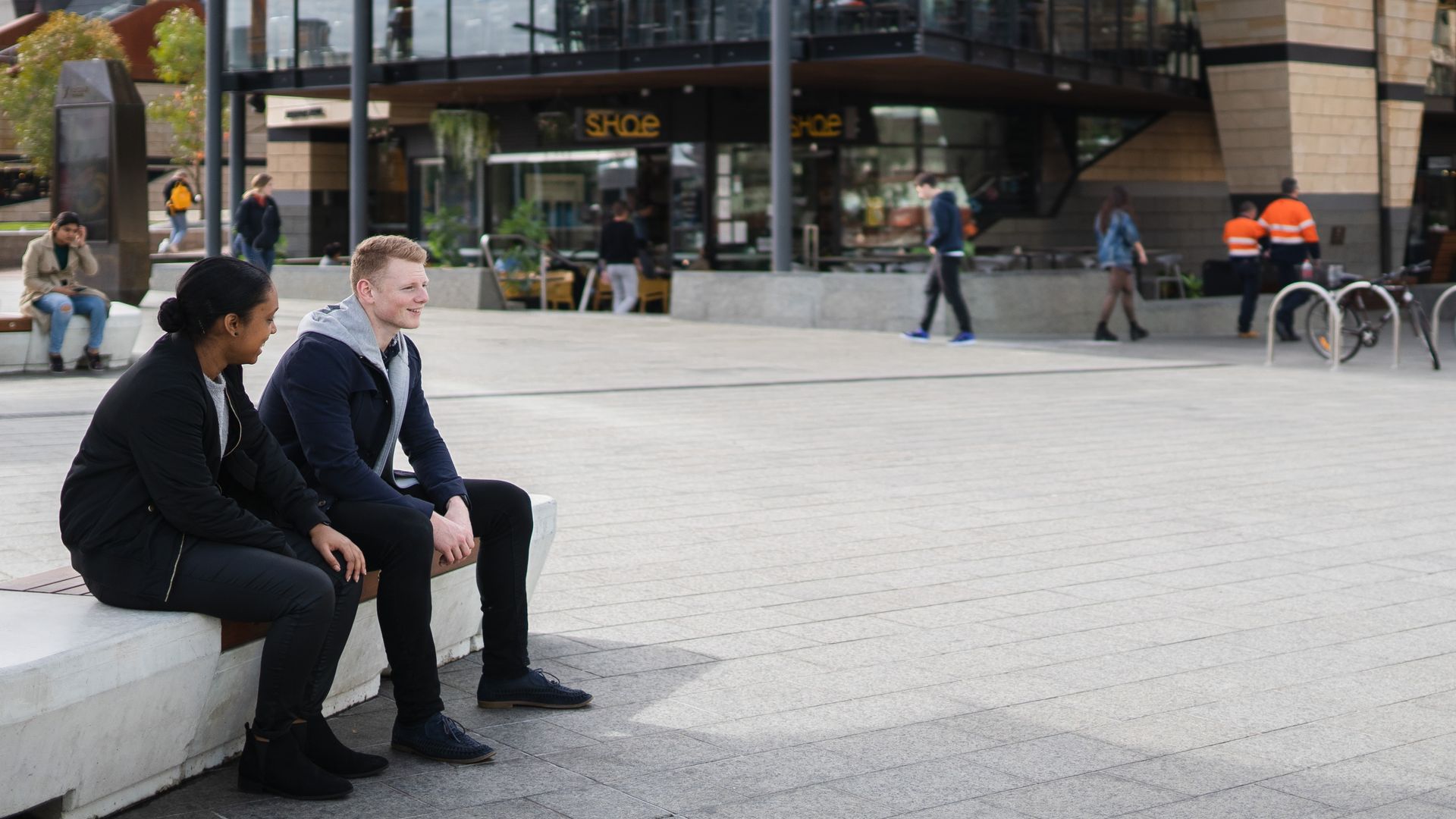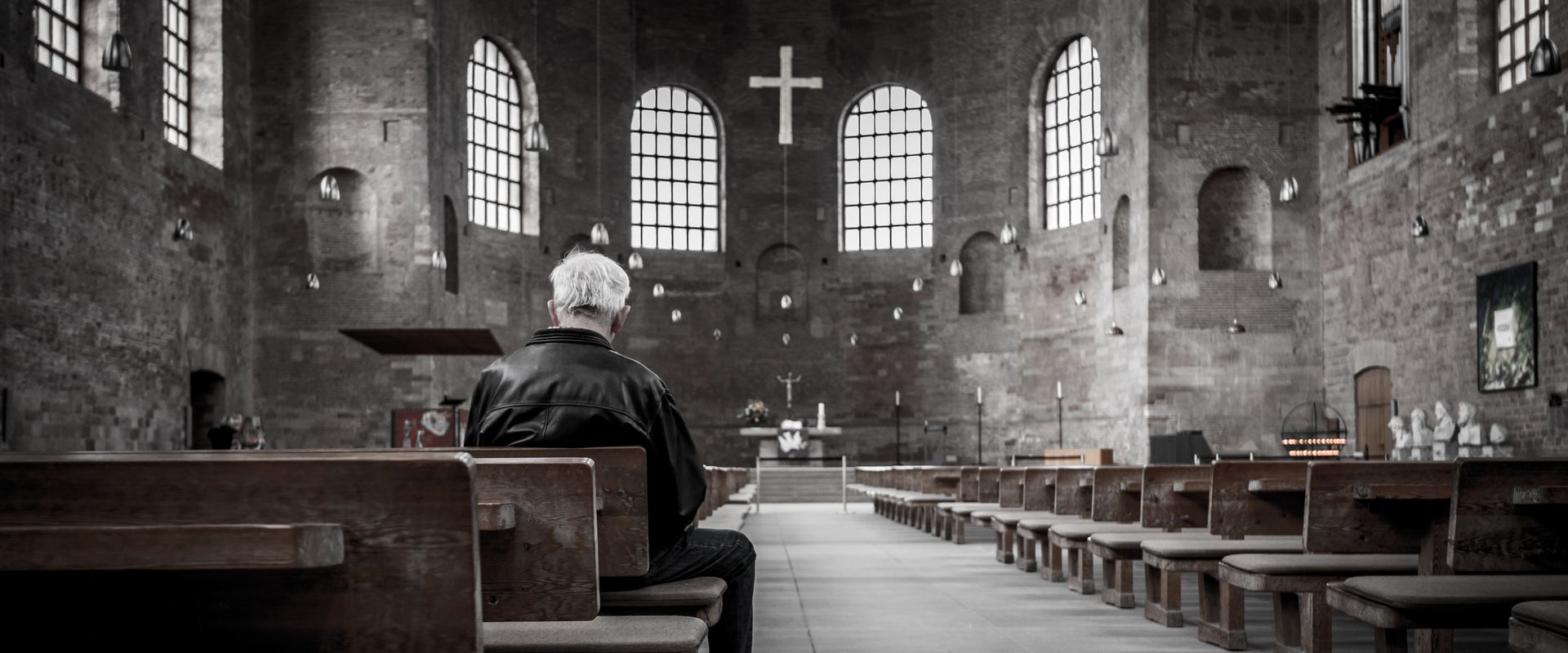I was on an early morning Zoom call when I realized it was time to step away from my role as director at a nonprofit organization. I’d invested eight years there, and I loved my team and the women we served. I loved advocacy work. I loved rallying support. After two decades of motherhood and a disparate resume of part-time jobs, I finally had an actual career. Even more, I was good at it.
This did not mean there hadn’t been challenges. By the time I joined that Zoom call, my body and mind were disregulated, evidenced by a missed meeting, a forgotten campaign, and simmering cynicism that never seemed to resolve. The week prior, I’d arrived at a grant meeting post-workout with slightly sweaty hair, a flushed face, and zero care. The pandemic had caused a spike in domestic abuse and community needs. For the organization, this meant painful organizational growth, staff vacancies, and triple the workload for remaining team members. To endure, I’d adopted the rabbinic mantra, “Do not be afraid of work that has no end.” I was drained by the endless work.
Burnout Is Reality
I wasn’t afraid of the endless work or of burnout; I expected it. In helper professions like social work, health care, and ministry, burnout is an assumed part of the job description. I’d written openly about my burnout experience in an article that received more comments than anything I’ve written to date. I regularly trained staff, volunteers, and other organizations in the signs of burnout, the importance of self-care, and trauma-informed interventions to better support healthy teams and individuals. I was vocal about my early morning prayer practice, my exercise discipline, and my commitment to journaling. I knew my personality type was more susceptible to compassion fatigue, so I assessed my limits often and kept my care plan creative.
When the client stories and endless grant proposals collided with trauma at home, I needed a place where I could get out of my head. I did the only thing I thought might save me and took a side hustle as a fitness instructor. I needed a place where music and movement were all anyone was asking of me, where no one was talking about poverty, abuse, or suicidal ideation.
Rhythms and rest weren’t cutting it anymore.
Burnout Is a Human Condition
A 2024 Gallup poll found 44 percent of employee departures were based on work-life balance. A 2024 Forbes article reported another survey found 50 percent of employees say time off leaves them feeling drained for at least a week upon return. Many of us are finding burnout is neither good nor bad. It’s neutral, really, a part of the human condition. Here’s what I mean by that.
“It’s natural to be used up for the purpose you were made to fulfill,” Seth Troutt tells me. He is teaching pastor at Ironwood Church in Mesa, Arizona. A decade ago, the church consulted with a sabbatical coach to establish best practices to better sustain the health of their leaders and church culture. Sabbaticals of six to 12 weeks are now scheduled for full-time staff members a year in advance, and granted to individuals every seven to 10 years.
Scheduling long periods of respite for team members not only communicates the importance of deep, holistic renewal, it also mitigates secret narratives — you can’t ask for help, pushing through is holier than rest — that have traditionally caused ministry workers to flame out or leave ministry completely. Troutt makes the distinction that the sabbaticals are a proactive decision, not a preventative measure, confessing his own 12-week sabbatical still wasn’t long enough to avert interrupted sleep within his first week back to work.
Though his ministry is his daily work, Troutt says his primary call is leveraging and stewarding the gifts God has given him. Spiritual disciplines such as prayer, stillness, or sabbaticals are sacred spaces for renewal, as well as for assessing alignment with the Spirit. But too often, spiritual disciplines are placed in the upper tier of self-care, suggesting adherence to spiritual practices is less about connecting with the Creator and more about circumventing burnout. It doesn’t work that way. “It’s humanism to believe burnout can be prevented or that overfunctioning can control human limitation,” Troutt adds.
American workplaces and workers are preoccupied with the prospect of burnout. And our cultural preoccupation with avoiding it is just that: avoidance. We become committed to the idea of controlling, escaping, and eventually transcending our humanness. We make countless frenzied efforts to ignore our limits, avoid asking for help, and expand our human capacity. In my own experience, and in my observations as a trainer for various organizations, shame, pride, and fear are primary factors driving these behaviors. Troutt highlights another factor: an over-spiritualized view of responsibility.
In the weeks that followed my early morning epiphany during that Zoom call, I wrestled shame, pride, and yes, that over-spiritualized view of my own responsibility. Each of these fueled a spectrum of fears: I was afraid of stepping away from my job title, afraid of leaving good work and good people, afraid of causing sadness for myself and my team. I was afraid my departure would raise questions about my capacity and commitment, and I was afraid of what that meant about me. I was afraid of leaving the work that has no end.
I was desperate to quell these fears with the usual protocol of rationale and detachment, but my spiritual disciplines of prayer and reflection had taught me to pay attention. My holistic practices of exercise and getting into my body had taught me to observe the somatic language of my physical systems. The sensation I’d intuited during my realization and the days that followed was a stirring deep in my gut — the embodied language of passion. It was scary. It was exciting. It was revealing God’s purpose at work in me, and more than that, it was heightening my sense of his timing and direction. None of these were signs of burnout. They were signals.
I was not being burned. I was being led.
Burnout Is a Sign and a Signal
An insight had surfaced several times over several months: I’d taken the organization as far as I could with the resources available to me — their resources and my own. I hadn’t come to the end of myself, I realized. I’d come to the end of a season.
In the Ecclesiastical understanding of seasons, there is a time for all things — gathering and scattering, staying and leaving. In the New Testament, opportune time, or Kairos, is defined as “the appointed time in the purpose of God.” Henri Nouwen elaborates on Kairos in Following the Movements of the Spirit:
When our time becomes Kairos, endless new possibilities and opportunities open up to our vision … we start to recognize God’s hands at work.
How do you know the season you’re in? How do you recognize the opening or closing of opportunity, the work of God’s hand and timing in the midst of it all? You observe both the interior and exterior landscapes. You move accordingly.
Interoception helped me notice what my body was sensing. It allowed me to pay attention to spiritual signals during my encounters with God. Skimming my journal with fresh eyes, I read of passions divinely given and taken. I read prayers asking God to expand my capacity or direct me elsewhere. The honest groans of my body, mind, and spirit were recorded there, and the truth was exposed: I burned for the new work God was stirring in me. Knowing this was a tremendous relief.
“My spiritual task is to learn to listen to all that is going on and trust that God’s hand is guiding me,” Henri Nouwen writes in the same volume. Knowledge is one thing, but in our physical and spiritual life, signals and stirrings demand a response. Eventually, one must press into the fear and the passion — and discern the opportune response.
Proprioception, the sense of where one is in time and space, brought my awareness to the calendar, which, ironically, helped me finalize my decision. Grant cycles were coming to an end. Campaigns could be prepared in advance. The holidays would bring three weeks of quiet. If there was a least disruptive window of time to leave, it was now.
I presented my resignation on a Tuesday, after a five mile run on a stretch of road that has shaped me in more ways than I can count. I was on that road last week, talking with a friend about the passions still being stirred in me a year and a half later. She’s sensing that same stirring, a nudge to leave her profession of 20 years. I encouraged her to keep paying attention.





